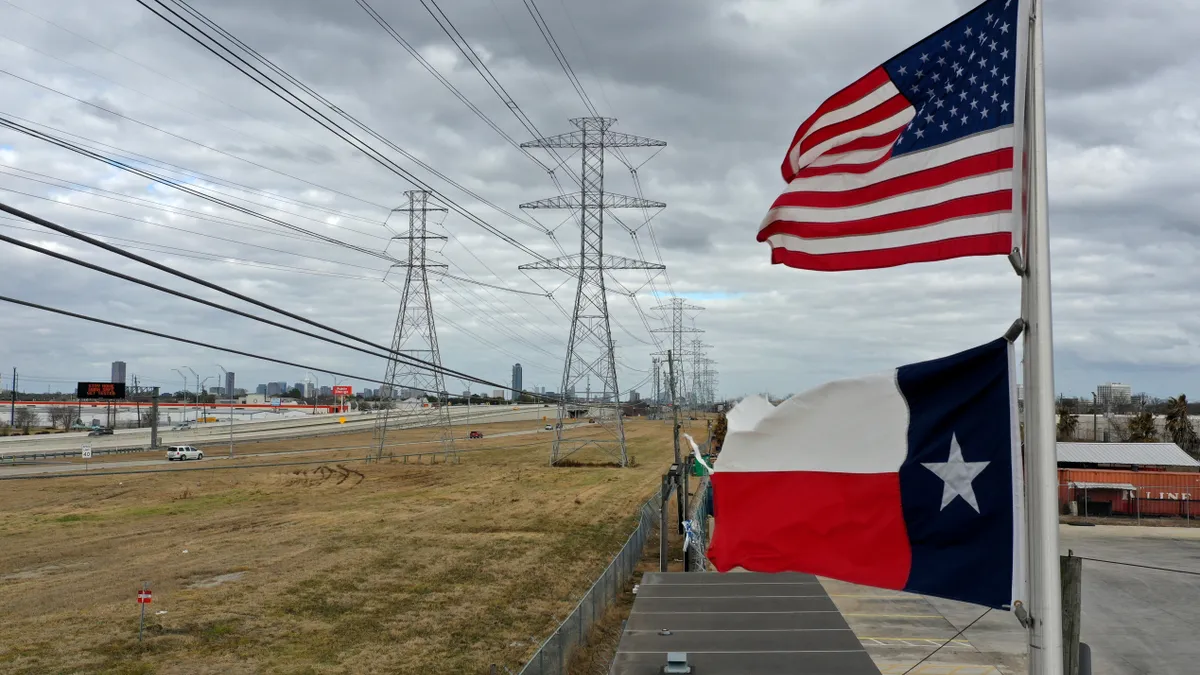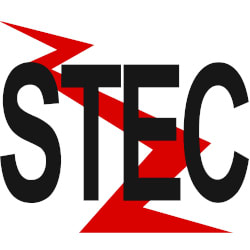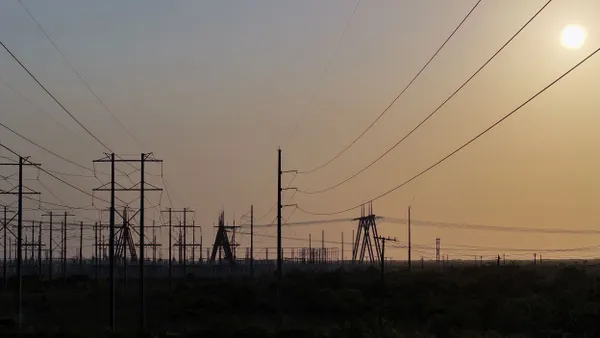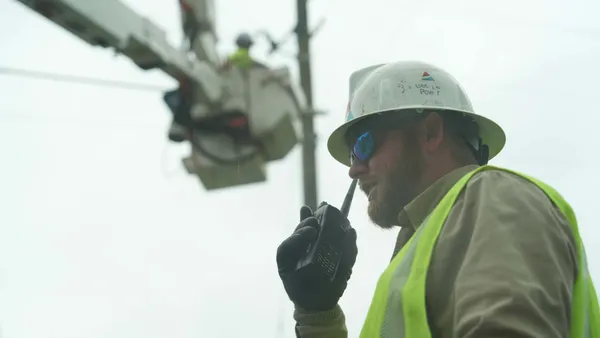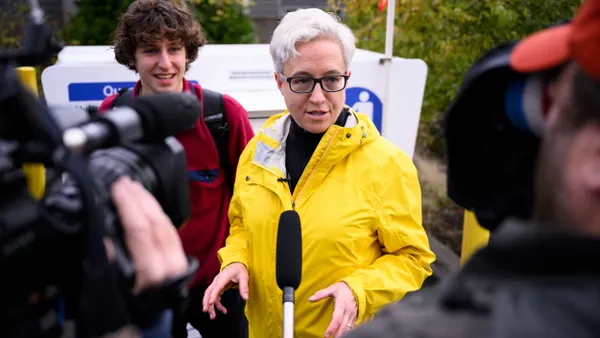This year’s Texas winter has not caused a repeat of the February 2021 power failures but building resilience to extreme weather remains a work in progress, state regulators, policymakers and others acknowledged.
Last year’s record freeze disrupted the state’s natural gas and electricity systems, leaving Texans shivering in the dark for days. At least 210 people died and power disruptions cost the state economy between $80 billion and $130 billion, according to a November study by federal regulators. Despite a major legislative and regulatory response, concerns remain about the state’s long term preparedness to deal with extreme weather impacts.
"These were unusual and trying circumstances, but we have done things to dramatically improve the situation," Public Utility Commission of Texas (PUCT) Chair Peter Lake told Utility Dive. "We can now avoid the downward spiral of the natural gas supply chain losing power and the power generators losing natural gas, which led to rolling blackouts."
But assurances from legislators and regulators "were undercut when natural gas production dropped in [this year's] January and February freezes," said Alison Silverstein, a former advisor to the PUCT and the Federal Energy Regulatory Commission (FERC). "Too many decisions have been made without analysis of impacts or cost-effectiveness and without considering alternatives. Hope is not a strategy."
Forecasts suggest Texas will avoid outages this winter but extreme weather threats from future winters and from summer heat, drought and hurricanes remain, climate researchers predict. And while new laws have improved generators’ weatherization, they did not protect the natural gas supply, most analysts agree. Overlooking other options may allow the climate crisis to keep messing with Texas, they said.
Big freeze, big fixes
The record-breaking February 2021 Texas cold snap sent temperatures 40 degrees to 50 degrees below average, according to the FERC-North American Electric Reliability Corporation (NERC) study. Over 4.5 million people lost power, some for four days, and there were 4,124 "outages, derates or failures to start" by unprepared generating units, it reported.
Infrastructure failures led to natural gas fuel supply shortages and the Electric Reliability Council of Texas (ERCOT) was forced to manage the "largest manually controlled load shedding event in U.S. history," the study added.
Texas came near a "devastating" multi-week outage event, then ERCOT President and CEO Bill Magness acknowledged February 25. That day, legislators began work on preventative laws.
Texas is likely to be safer because of "the generators’ good response to legal requirements for weatherization," Texas State Senator Nathan Johnson, a Democrat who helped pass bipartisan legislative reforms, said this month.
Senate Bill (SB) 3 in particular was pivotal. It required power system winterization, approved bonds for February 2021 elevated customer bills and weatherization costs going forward, and required ERCOT and the Railroad Commission of Texas (RCT), which regulates the state’s natural gas and oil sectors, to identify critical infrastructure. It also improved emergency planning, reduced the price cap on electricity during periods of scarcity from $9,000/MWh to $5,000/MWh, and strengthened penalties for not meeting regulations.
In addition, House Bill 3648, required ERCOT and the RCT to map and protect the identified critical infrastructure. House Bill 16 required expanded customer protections from retail electric service providers. And Senate Bills 2 and 2154 restructured the Texas energy regulatory agencies.
SB 3’s new winterization requirements were met by 321 out of 324 electric generation units and transmission facilities, ERCOT reported January 18. And the PUCT is working with the RCT to ensure "critical elements of the natural gas supply chain will not be included in any rolling blackouts," PUCT Chair Lake said.
The work on power system reliability in Texas’s 2021 legislative session was effective, Senator Johnson and Republican Texas State Senator Kelly Hancock agreed. But lawmakers and regulators "have more work to do over the longer term," Hancock added.
Both near and long term reliability improvements are also addressed in Texas’s other major step forward, the PUCT’s Blueprint for market reform.
The Blueprint
The PUCT's January 13 Blueprint is a "compilation of directives" from the legislature and "concepts" from regulators developed to reform ERCOT’s wholesale electricity market, the commission wrote.
Its first phase calls for near-term changes to current wholesale market mechanisms "to enhance ancillary services and improve price signals and operational reliability," the PUCT wrote. Its second phase proposes "principles" for longer-term reforms to improve system reliability, which it wants ERCOT action on "as soon as practicable," the PUCT added.
ERCOT’s response makes clear that implementation of the Phase I changes to operating reserves and the emergency price cap are already underway and all other proposals will take time. "We do not yet have all necessary details," it told the PUCT.
Over time, ERCOT will develop several ancillary services to quickly provide supply and demand response programs to reduce load, it said. But its priority for the next 18 months is emergency measures to manage increasing "variability and ramping" challenges.
Phase II proposals target dispatchable generation to improve reliability. A "Load-Serving Entity Obligation" and a "Backstop Reliability Service," both with "economic rewards" and "robust penalties," are outlined.
"Our north star is reliability," but the requirements are "deliberately within a technology-agnostic, competitive market construct," PUCT Chair Lake said. There are "economic incentives for the best, most affordable technology, whether it is hydrogen or geothermal or the next generation of batteries or some combination of those or something that does not exist yet," he said.
Already approved Phase I initiatives will take time to design, test and implement, and there has been "no groundwork or meaningful action" on the Phase II proposals, said Beth Garza, former director of ERCOT's Independent Market Monitor and currently energy and environmental policy senior fellow for consultant R Street. The Blueprint "is not the end of a sprint, it is the start of a marathon," she added.
"It is easier to do things fast and [it's] harder to do them well," and to do market design well, it should be done deliberatively, Garza said. But the Blueprint does not provide details about trade-offs, like reliability versus cost, which may be either because the PUCT did not deliberate over answers, or because it wants answers to come from stakeholder processes.
This changing system requires reforms, agreed former FERC and PUCT Chair Pat Wood III, currently Hunt Energy Network CEO. The Phase I reforms should be tested, but "if they do not perform well, the PUCT seems willing to keep what works and improve what it can."
But the one thing that may prove difficult to improve is the RCT's regulation of natural gas suppliers. And that one thing could work against all the PUCT and ERCOT efforts.
The Railroad Commission
The RCT has a different approach to regulation of natural gas suppliers than the PUCT uses to regulate electricity, Wood, Garza and others agreed. While ERCOT offers transparent electricity price and system information, "there is nothing like that for natural gas," Wood said.
Texas "has a lot more work to do," Silverstein wrote this February in a follow-up to a June 2021 assessment of last year's events she and five former PUCT commissioners issued. Though ERCOT and the PUCT earned many low grades for limited progress on the Blueprint, they also earned some As and Bs, while the RCT earned only Ds and Fs.
Resentment of RCT's regulatory approach and lack of price transparency grew when Texas’s February 2021 electricity bills reached over $11 billion, according to July 2021 reporting by Fortune.
Natural gas suppliers saw windfall profits last year. Energy Transfer reported a $3.29 billion net profit for Q1 2021, an increase of $4.14 billion over its $855 million net loss in Q1 2020. Kinder Morgan saw a $1.41 billion net income in Q1 2021 after a Q1 2020 net loss of $306 million.
"Anecdotal evidence" of price manipulation by natural gas suppliers was acknowledged in a December 17 presentation to ERCOT by NERC Chief Technical Advisor Thomas Coleman. Natural gas suppliers' use of "price majeure," which allowed them to escape low price contracts and sell at much higher February shortage prices, led to "a FERC inquiry into market manipulation," Coleman said.
An investigation is also being conducted by the Texas Attorney General. Neither the RCT nor the Attorney General’s office answered Utility Dive queries about the investigations and FERC declined to comment about its ongoing investigation.
Questions about RCT regulation were renewed this year when frigid January and February weather resulted in intermittent electricity service disruptions. Resentment grew until stakeholder protests convinced the RCT to more aggressively impose the state legislative mandate requiring weatherization of critical infrastructure on natural gas suppliers, Senator Johnson said.
The RCT’s approach to regulation is "a big source" of Texas’s remaining problems, and if it does not improve price transparency and impose emergency price controls, "new legislation may be necessary," he said. "Billions of dollars going to a few natural gas companies has begun to motivate people not obligated to the natural gas industry to call for change."
Senator Hancock disagreed. "The system has performed quite well" this year, showing the new legislation and regulation "has worked," he said.
But many stakeholders insist much is left to be done.
"Texas needs natural gas market reform," insisted economist Peter Cramton, who resigned from the ERCOT board on February 23, 2021. "Natural gas suppliers probably did not break any laws last year, they just made money in ways RCT regulation allowed," he said. "The absence of transparency and detailed market constraints came back to bite Texas."
With extreme weather becoming more common and RCT reform in doubt, two long overlooked alternative solutions are getting new attention.
Two alternative fixes
National interconnection
The Texas legislation included little about interconnecting ERCOT with the adjacent Eastern and Western electricity transmission systems regulated by FERC, said Lucas Davis, University of California, Berkeley, Haas School of Business professor of economics. And the FERC-NERC study only briefly mentioned it among "additional recommendations," he added.
But academic research and Department of Energy studies suggest that with interconnection "a whole lot of Texas’ energy problems go away, making electricity more reliable, cheaper, and greener," Davis said. Market integration connects energy buyers and sellers, which can reduce average prices and allow the profitable export of abundant Texas wind and solar, he added.
Texas has long avoided interconnection and the threat to ERCOT’s planning and financial jurisdiction from FERC's authority over interstate transmission, Energy Counsel Principal Attorney Steve Huntoon wrote in an RTO Insider editorial last June. But "FERC can simply issue a policy statement that future interconnections — AC or DC — will not subject Texas utilities to plenary FERC jurisdiction."
That is within FERC’s authority under Sections 210, on interconnection, and 211, on transmission, of the Federal Power Act, wrote Huntoon, who has represented Dynegy, Exelon and NextEra and testified to FERC on energy and transmission issues. Both former FERC Chair Wood and former PUCT commissioner Karl Rabago, now an independent consultant, agreed. But "it is not certain that would improve Texas reliability," Rabago added.
"The political reality is that concerns about Texas independence will prevent interconnecting ERCOT," former ERCOT board member Cramton said. "It could take a decade or more for Texas policymakers to understand the state can be the energy capital of a declining fossil fuel industry or the energy capital of an expanding renewables industry."
But Chair Lake may be signaling a change. "Interconnections are welcome if they enhance reliability and maintain Texas jurisdiction," PUCT Chair Lake said. "We will evaluate the merits of each proposal to be sure there is no risk of federal intervention, because our independence has even recently allowed moving quickly."
Both Senators Hancock and Johnson agreed. And a Senate Bill 1-ordered study, when completed, will determine if interconnecting ERCOT would increase reliability, impact customer costs, increase energy exports, or subject ERCOT to federal regulation.
The demand side
ERCOT’s response to the Blueprint indicates implementing the PUCT proposals will take time, and "Texas can use the time to systematically study all options," former PUCT and FERC adviser Silverstein said. If the overlooked option of energy efficiency is legislatively mandated and funded by customers, it can provide more cost-effective reliability than other resources funded in the same way, her November 22 study showed.
"ERCOT does not fully appreciate how to value or facilitate demand-side resources in its markets," agreed former FERC Chair Jon Wellinghoff, now Chief Regulatory Officer for demand response provider Voltus. New programs could demonstrate how demand-side resources can affordably "de-risk" retail electricity providers with aggregations of flexible DER that provide emergency supply to increase reliability.
Incentives for energy efficiency and aggregated demand-side resources "address both reliability and supply-side issues" because aggregations of them are can be like "a thousand points of light that increase supply and reduce demand," agreed former PUCT and FERC Chair Wood.


